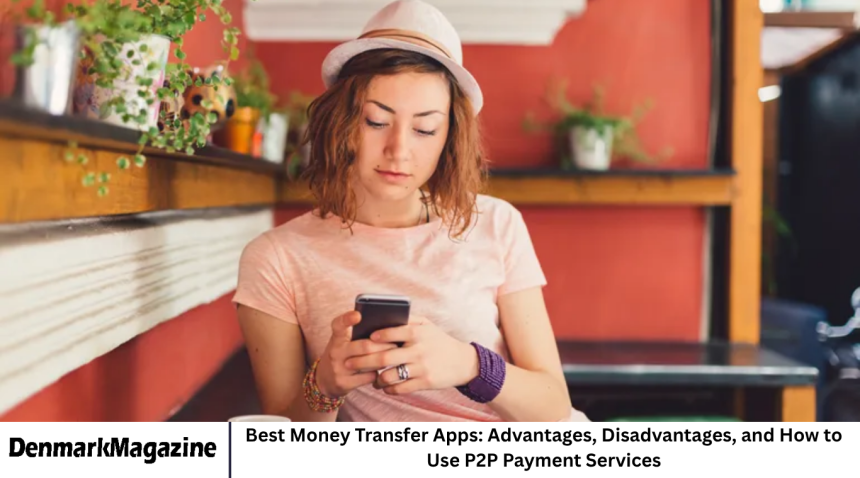Money transfer apps have completely changed the way people send and receive money. Whether you are splitting dinner costs, paying rent, or transferring funds overseas, peer-to-peer payment services make transactions simple, fast, and convenient. With popular options such as PayPal, Venmo, Cash App, Zelle, and Wise, users now have more ways than ever to move money digitally. However, with so many choices available, it can be difficult to decide which app fits your needs best. This article explains what P2P payment apps are, examines some of the top options, and explores their advantages, disadvantages, and safety tips for using them effectively.
What Are Peer-to-Peer Payment Apps
Peer-to-peer, or P2P, payment apps allow individuals to send money directly to one another using smartphones or other connected devices. These apps link to a bank account, debit card, or digital wallet, making it easy to transfer funds instantly without visiting a bank or handling cash. Most P2P platforms also come with added features such as instant or same-day transfers, bill splitting, QR code payments, and sometimes even international transfer options.
Best Money Transfer Apps in 2025
Among the many available platforms, several stand out for their reliability, features, and ease of use. PayPal remains one of the most popular and trusted digital payment systems. It supports transactions in over 200 countries and provides buyer protection, making it ideal for online shopping and international transfers. However, PayPal’s fees for international payments can be relatively high, and withdrawals to bank accounts sometimes take longer than expected.
Venmo, which is owned by PayPal, is another leading app that appeals to younger users because of its social features. It allows people to share and comment on payments, creating a casual and engaging experience. Transfers are free when linked to a bank account, and the app is fast and easy to use. However, Venmo is available only in the United States and is not designed for business payments.
Cash App, created by Block Inc., offers more than just money transfers. It also allows users to buy stocks and cryptocurrencies. It provides quick transfers and even includes a debit card option known as the Cash Card. Despite these advantages, Cash App has limited international availability and offers less protection for users who make payment errors.
Zelle has become popular in the United States because it connects directly with many banks, allowing users to send money from one account to another instantly without relying on a separate app. It is free to use and transfers are nearly instantaneous. However, Zelle is limited to domestic use within the U.S. and does not provide buyer protection if money is sent to the wrong person.
Wise, formerly known as TransferWise, is widely used for international money transfers. It is known for its transparent pricing and low fees. Wise uses mid-market exchange rates, helping users save money when sending funds abroad. Although it may take one or two business days for transfers to complete, Wise remains a strong choice for global transactions and multi-currency accounts.
Advantages of Using Money Transfer Apps
The biggest advantage of P2P payment apps is convenience. Users can send and receive money instantly without visiting a bank or dealing with physical cash. These apps also provide impressive speed, with most transactions completed in seconds, especially for domestic payments. Fees are usually low, and in many cases, transfers between friends or linked accounts are completely free. Accessibility is another important benefit, as anyone with a smartphone and an internet connection can use these services, even in areas with limited traditional banking options. In addition, many apps integrate with online stores or investment platforms, expanding their usefulness beyond basic money transfers.
Disadvantages of P2P Payment Apps
Despite their many advantages, there are some drawbacks to using P2P payment apps. Security risks remain a concern, as scammers may try to trick users through fake requests or phishing attempts. Most apps offer encryption but cannot always reverse mistaken transfers. Many platforms also have transaction limits, restricting large transfers or business use. International coverage is not universal, with services like Venmo and Zelle only operating within the United States. Finally, because these apps rely entirely on internet access, poor connectivity can interrupt transactions.
How to Use Money Transfer Apps Safely
Safety should always be a priority when sending money online. Users should take time to verify recipient information before completing a payment to avoid mistakes. Enabling two-factor authentication adds an extra layer of protection, requiring a second form of verification before transactions are approved. It is best to send money only to trusted individuals or verified businesses and to use strong, unique passwords for each app. Regularly checking account activity can also help detect unauthorized transactions early. Users should be cautious of scams that promise easy profits or request personal information, as such schemes are often designed to steal money or data.
Choosing the Right Money Transfer App
The best money transfer app depends on what you need it for. People who send funds overseas may prefer Wise or PayPal for their global reach and transparent exchange rates. Those focused on quick local transfers might find Venmo or Zelle more convenient. Cash App appeals to users who want the added flexibility of investing and spending directly from their app balance, while PayPal and Wise are well-suited for freelancers and small businesses managing cross-border payments. When choosing, it is wise to compare transaction fees, transfer speed, security features, and whether the app operates in your country.
Future of Money Transfer Apps
The future of P2P payment technology is promising. Developers are experimenting with blockchain systems to make international transfers faster and more secure. Artificial intelligence is being used to detect and prevent fraudulent transactions. As financial technology evolves, money transfer apps are expected to become more integrated with online banking and digital wallets, making financial management even smoother. Central Bank Digital Currencies and government-backed payment systems could also change the way people send and receive money in the coming years, combining the speed of digital payments with official regulation and stability.
Frequently Asked Questions
What are money transfer apps used for?
Money transfer apps allow users to send, receive, and sometimes store money digitally through their mobile devices, eliminating the need for cash transactions.
Are money transfer apps safe?
Most reputable apps use encryption and fraud detection systems, but users should still take precautions such as verifying recipients and enabling two-factor authentication.
Which money transfer app has the lowest fees?
Wise is often considered the most cost-effective option for international transfers because it uses mid-market exchange rates and transparent fees.
Can I use a money transfer app without a bank account?
Some apps like Cash App allow users to receive and spend money using a debit card, but linking a bank account provides more flexibility and reliability.
What should I do if I send money to the wrong person?
Unfortunately, most P2P apps cannot reverse payments once they are sent. It is important to confirm the recipient’s details carefully before completing a transaction.
Conclusion
Money transfer apps have reshaped the modern financial world, offering speed, simplicity, and global access. They have made it easier for friends, families, and businesses to send money quickly and securely without the hassle of traditional banking systems. However, users must remain alert to potential risks, especially security threats and transaction errors. By understanding each app’s strengths and weaknesses, you can choose one that fits your lifestyle, keeps your finances safe, and makes managing money effortless in the digital age.











